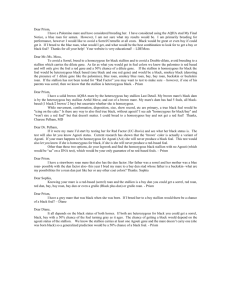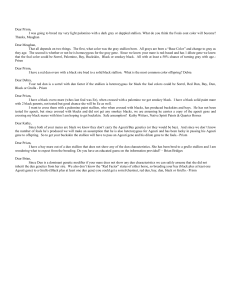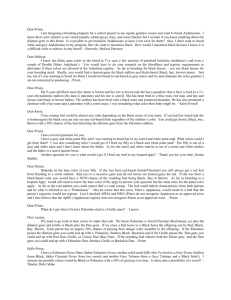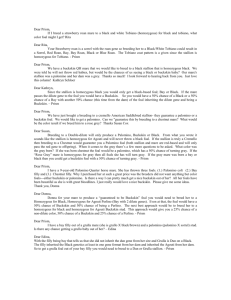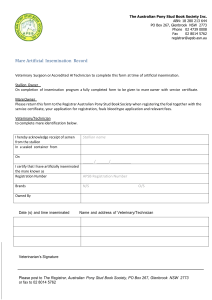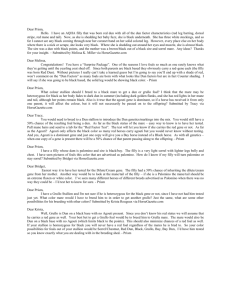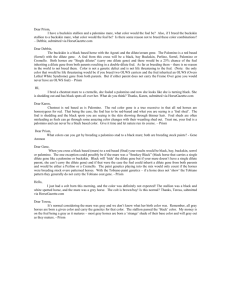FINAL-Prism-August
advertisement
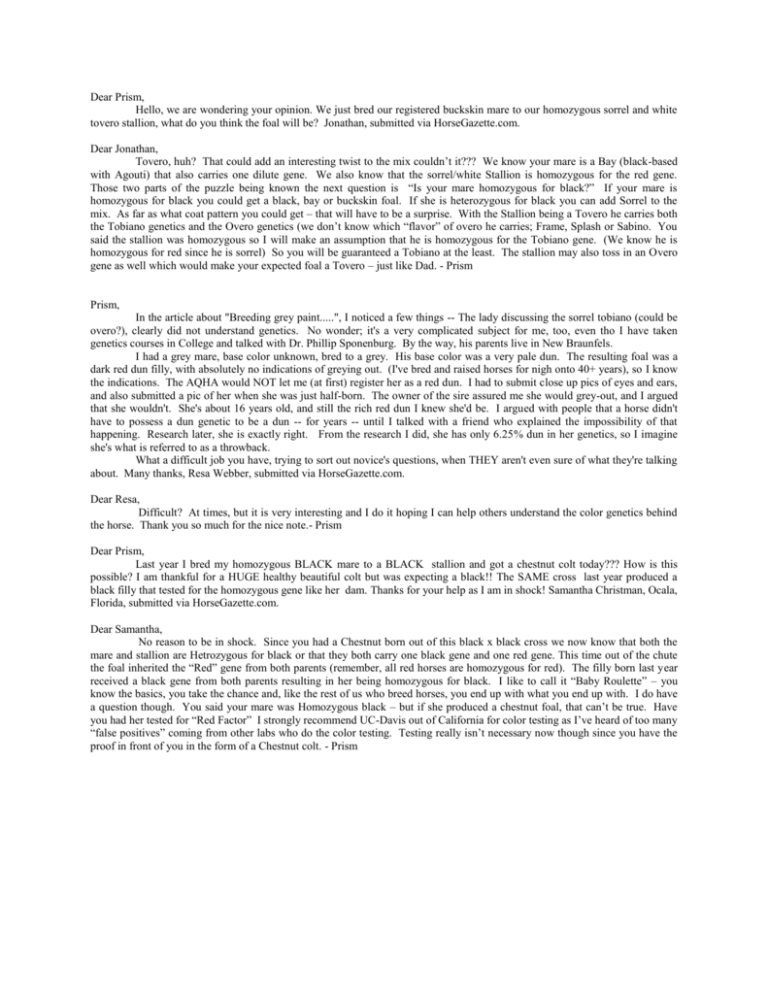
Dear Prism, Hello, we are wondering your opinion. We just bred our registered buckskin mare to our homozygous sorrel and white tovero stallion, what do you think the foal will be? Jonathan, submitted via HorseGazette.com. Dear Jonathan, Tovero, huh? That could add an interesting twist to the mix couldn’t it??? We know your mare is a Bay (black-based with Agouti) that also carries one dilute gene. We also know that the sorrel/white Stallion is homozygous for the red gene. Those two parts of the puzzle being known the next question is “Is your mare homozygous for black?” If your mare is homozygous for black you could get a black, bay or buckskin foal. If she is heterozygous for black you can add Sorrel to the mix. As far as what coat pattern you could get – that will have to be a surprise. With the Stallion being a Tovero he carries both the Tobiano genetics and the Overo genetics (we don’t know which “flavor” of overo he carries; Frame, Splash or Sabino. You said the stallion was homozygous so I will make an assumption that he is homozygous for the Tobiano gene. (We know he is homozygous for red since he is sorrel) So you will be guaranteed a Tobiano at the least. The stallion may also toss in an Overo gene as well which would make your expected foal a Tovero – just like Dad. - Prism Prism, In the article about "Breeding grey paint.....", I noticed a few things -- The lady discussing the sorrel tobiano (could be overo?), clearly did not understand genetics. No wonder; it's a very complicated subject for me, too, even tho I have taken genetics courses in College and talked with Dr. Phillip Sponenburg. By the way, his parents live in New Braunfels. I had a grey mare, base color unknown, bred to a grey. His base color was a very pale dun. The resulting foal was a dark red dun filly, with absolutely no indications of greying out. (I've bred and raised horses for nigh onto 40+ years), so I know the indications. The AQHA would NOT let me (at first) register her as a red dun. I had to submit close up pics of eyes and ears, and also submitted a pic of her when she was just half-born. The owner of the sire assured me she would grey-out, and I argued that she wouldn't. She's about 16 years old, and still the rich red dun I knew she'd be. I argued with people that a horse didn't have to possess a dun genetic to be a dun -- for years -- until I talked with a friend who explained the impossibility of that happening. Research later, she is exactly right. From the research I did, she has only 6.25% dun in her genetics, so I imagine she's what is referred to as a throwback. What a difficult job you have, trying to sort out novice's questions, when THEY aren't even sure of what they're talking about. Many thanks, Resa Webber, submitted via HorseGazette.com. Dear Resa, Difficult? At times, but it is very interesting and I do it hoping I can help others understand the color genetics behind the horse. Thank you so much for the nice note.- Prism Dear Prism, Last year I bred my homozygous BLACK mare to a BLACK stallion and got a chestnut colt today??? How is this possible? I am thankful for a HUGE healthy beautiful colt but was expecting a black!! The SAME cross last year produced a black filly that tested for the homozygous gene like her dam. Thanks for your help as I am in shock! Samantha Christman, Ocala, Florida, submitted via HorseGazette.com. Dear Samantha, No reason to be in shock. Since you had a Chestnut born out of this black x black cross we now know that both the mare and stallion are Hetrozygous for black or that they both carry one black gene and one red gene. This time out of the chute the foal inherited the “Red” gene from both parents (remember, all red horses are homozygous for red). The filly born last year received a black gene from both parents resulting in her being homozygous for black. I like to call it “Baby Roulette” – you know the basics, you take the chance and, like the rest of us who breed horses, you end up with what you end up with. I do have a question though. You said your mare was Homozygous black – but if she produced a chestnut foal, that can’t be true. Have you had her tested for “Red Factor” I strongly recommend UC-Davis out of California for color testing as I’ve heard of too many “false positives” coming from other labs who do the color testing. Testing really isn’t necessary now though since you have the proof in front of you in the form of a Chestnut colt. - Prism

